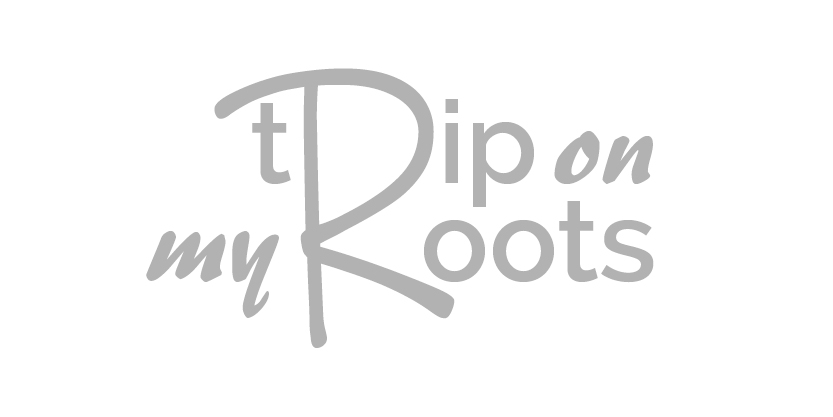Désalpe de l’Etivaz
by Katie | Published October 18 2018 | Switzerland
The end of September and beginning of October is a beautiful period in Switzerland; often it is still warm, pastures are still green, but a hint of color appears in the trees. Also, it is the time where traditionally farmers lead their cattle back down to the valleys from the mountain pastures they have been grazing over the summer. This occasion is a special event surrounded by celebration, it is called the désalpe in French or the Alpabzug in German.
The cattle farmers, or armailli as they are called locally, leave the high mountain pastures early in the morning and walk several hours, traversing villages where onlookers cheer them on, down to their winter farm. The armailli dress in their traditional wear, the bredzon for the men and the dzaquillon for the women. The cattle are also made to look their best with flowers adorning their horns and bells around their necks.
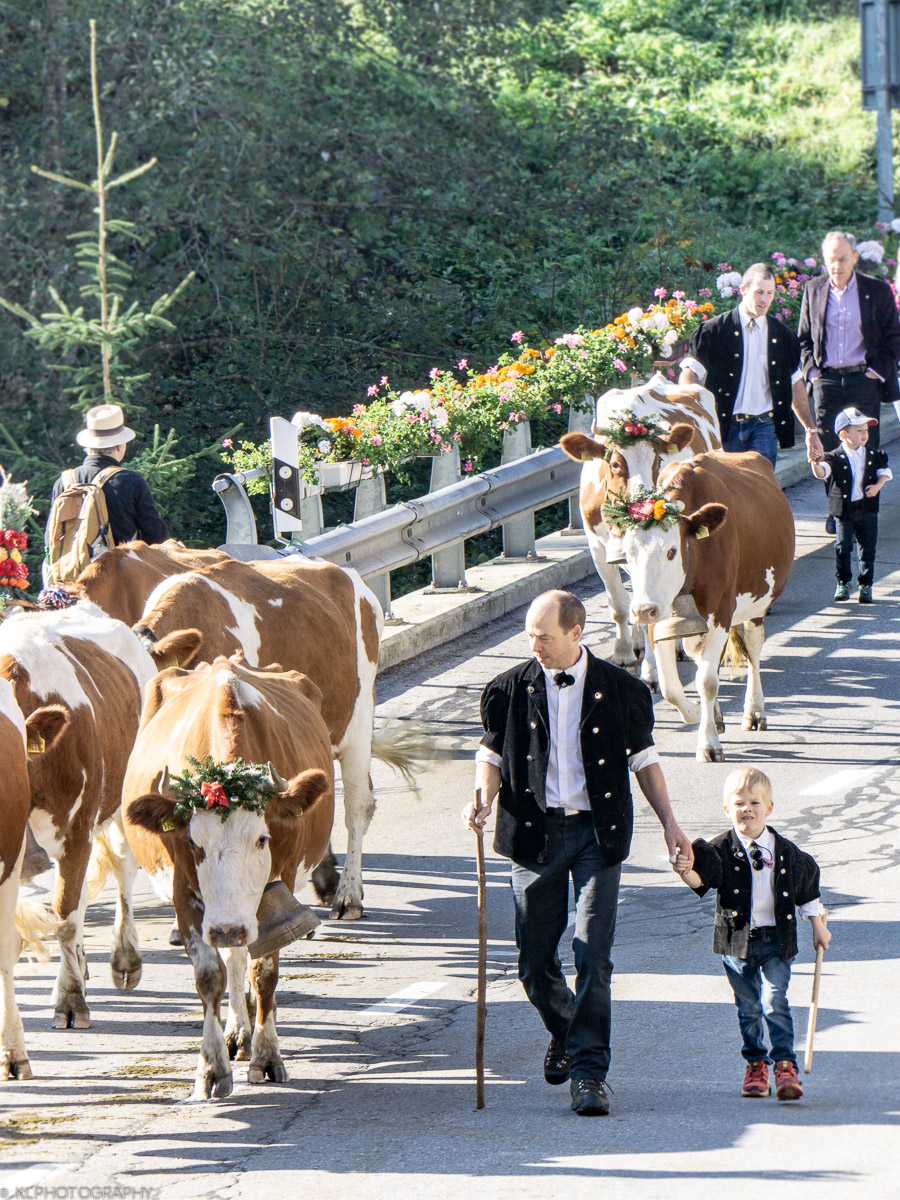
Family, locals and in more recent years tourists gather to admire and encourage the processions. Some Désalpes have become so popular that it has become a full day celebration, with food and artisan stalls, traditional music and demonstrations of other local traditions such has yodeling, la lute or bread making. This year, I went with my parents and a family friend to the Désalpe in l’Etivaz which was held on the 29th of September.
L’Etivaz is a very small village in the Pays-d’Enhaut region of the canton of Vaud. It is located between Château-d’Oex and Les Mosses and is particularly known for its local cheese that goes by the same name, l’Etivaz.
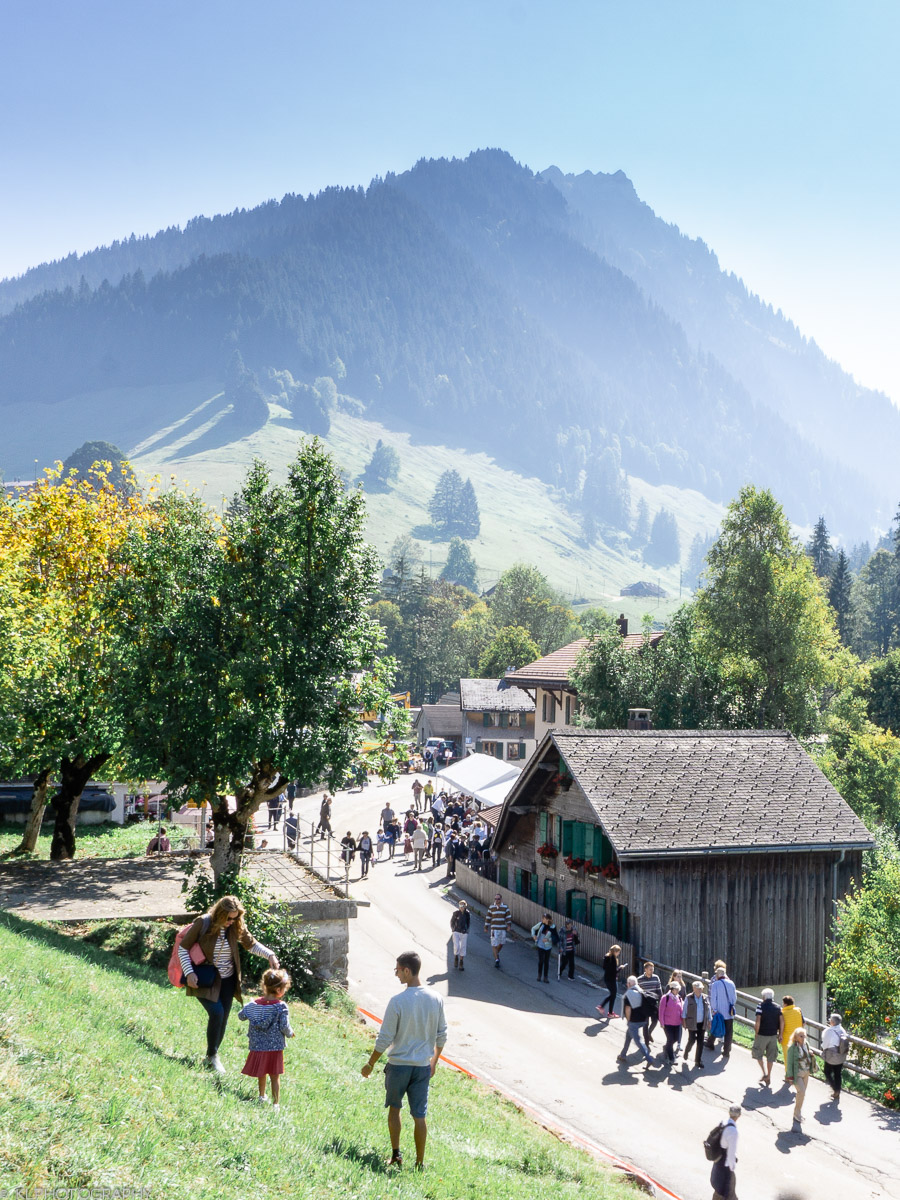
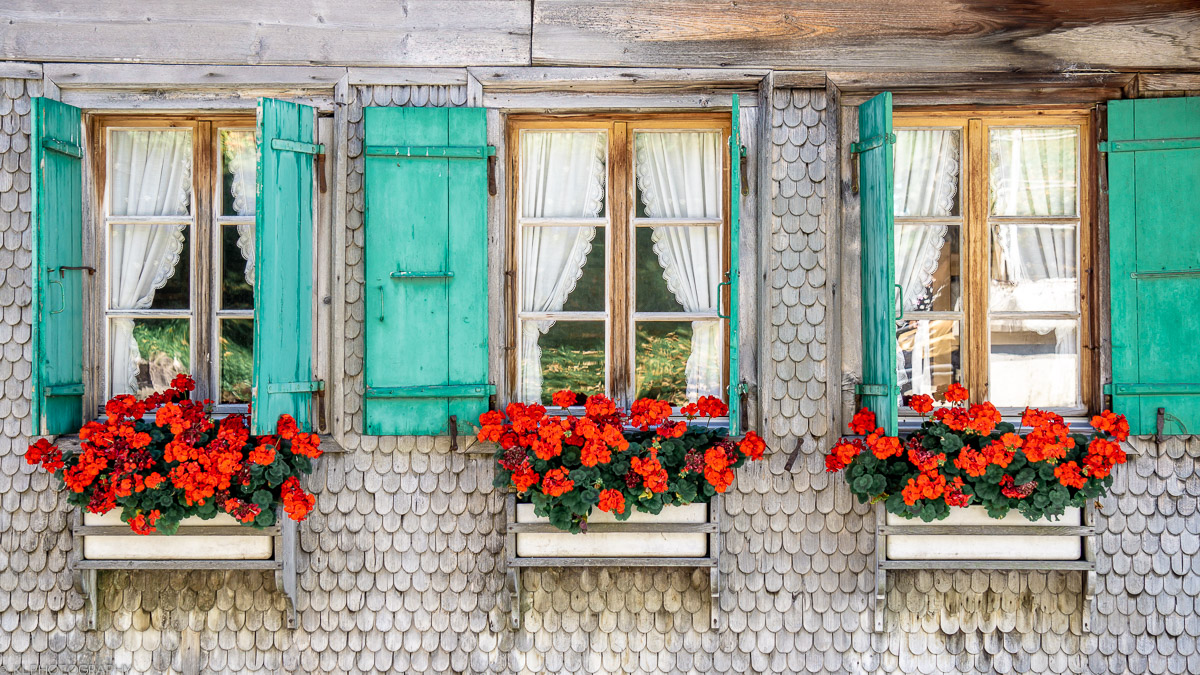
The first group to pass through the village was scheduled at 9.30am, so we left Château-d’Oex by car at 9.00am. It is quite a windy road to L’Etivaz and for anyone who is not familiar with the region or who has never had to drive past a herd on the road, I would discourage taking your car. A free shuttle is organized from Château-d’Oex.
Just as we neared the village of l’Etivaz, the first herd past us, their arrival announced by the echo of the cows’ bells. It was a lovely sight with the morning sun behind them, steam rising from the cows’ backs.
Once we parked, we managed to secure a great spot to watch the procession on the top patio of the Chamois Restaurant in the center of the village. There are plenty of other vantage points throughout the village which means that everyone can get a good view.

We ordered a bottle of white wine (yes, it was only about 9.45am at this point, but the désalpe is one of those few occasions where it is acceptable to drink so early) and bought a commemorative pin. The pins are an equivalent of an entry ticket, the proceeds of which go to supporting the organization of the event, attendees are expected to purchase one if aged 16 years or older.
We watched the next herd go by which was led by a group of children all adorned in their lovely traditional outfits. The désalpe is very much a family affair for the farmers, as are most tasks and events related to agriculture here in Switzerland. The désalpe is one of the yearly occasions where the public shows appreciation to the armailli and their work and it is lovely to see the pride on their faces as they are applauded and cheered across the village.
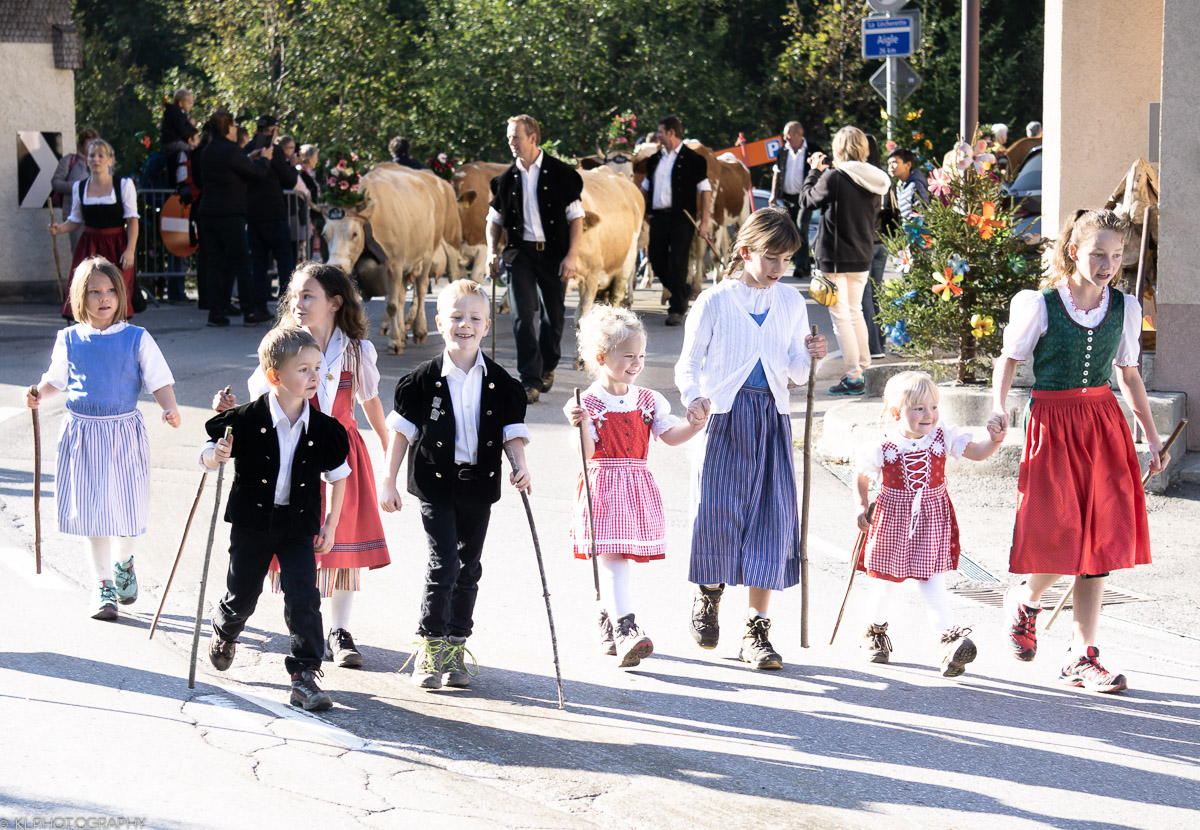
Before the next herd arrived, we strolled over to the market and artisan area where we discovered various local produce and artifacts. There were baked goods, conserves, dried meats, pottery, bells and more! I spoilt myself with a packet of freshly made chocolate bristlé. Bristlé is a local pastry, it is a very thin wafer made a special iron with intricate designs that is then rolled into a cigar shape.
We also enjoyed a few songs played by the alpenhorn players, saw the bell ringers go by and watched some kids try their hand at lutte, a traditional Swiss sport where 2 lutteurs try to pin their adversary to the ground. They must keep their hands on their adversary’s ‘shorts’, they win once their opponent’s shoulder touches the ground.
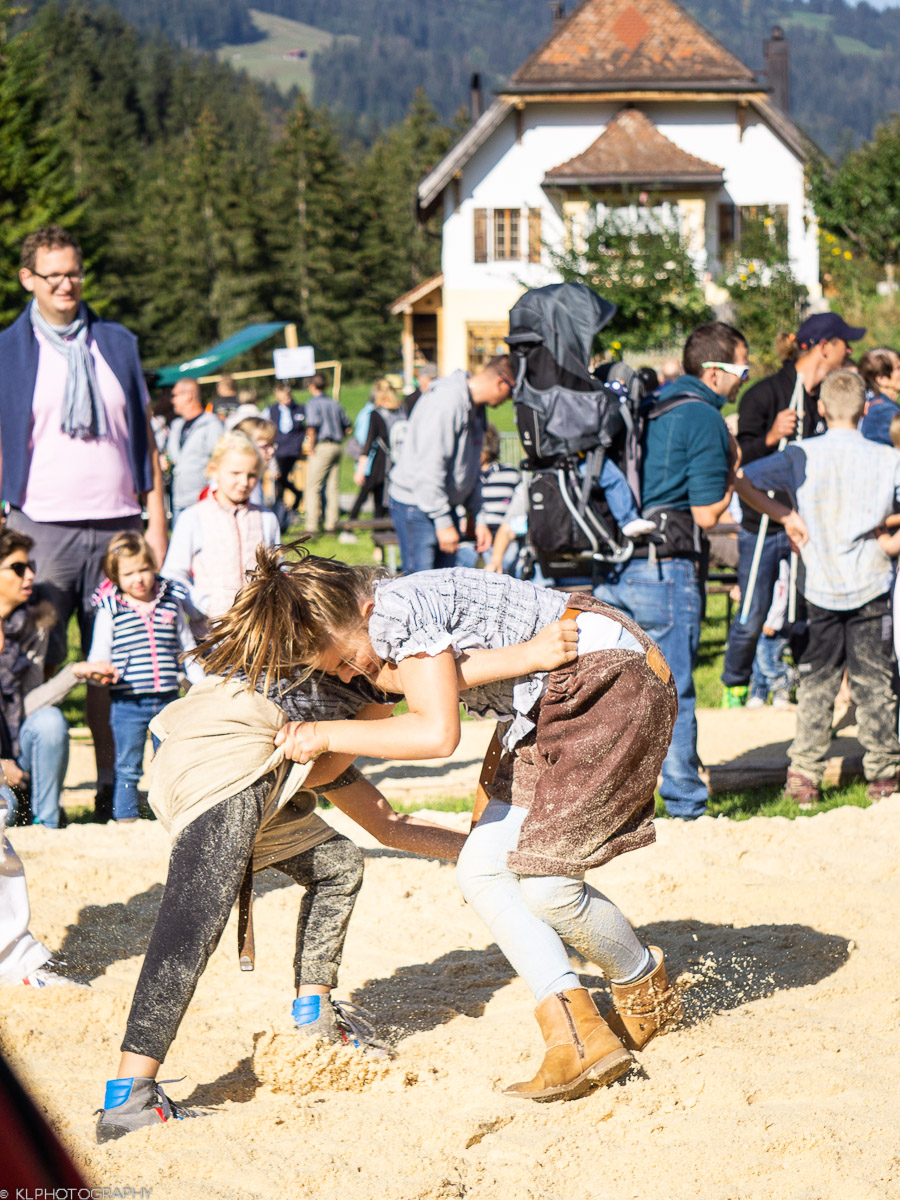
We returned to our table to watch the next processions and finish our wine. At noon we drove back to Château-d’Oex, passing one of the herds on our way. We could have stayed for the day and enjoyed a free visit of the cheese factory and raclette dinner, but my parents had a train to catch.
I nevertheless got to enjoy the désalpe a bit longer while in Château-d’Oex as a couple of the groups crossed the town en route to their farms. Some herds were also left to relax in the fields nearby, munching on some fresh grass and resting their tired limbs.

The désalpe is a truly lovely Swiss tradition. Naturally, most cattle herds today are driven down the mountains in trucks rather than walking. But the tradition is maintained as a cultural heritage and I think it is a great occasion for the population to applaud the farmers for their arduous work. I am glad this custom is carried on and that I got to enjoy it in Etivaz this year.
Driving past a désalpe, a few tips :
If you are driving around Switzerland during the désalpe ‘season’ or if you are attending one by car, it is likely that you may share the road at one point with a herd coming down the mountains. Here are a few tips should this happen:
- Slow down, but keep moving to pass the cows as fast as possible
- Stay close to the car ahead of you – it is chaotic for the farmers if a cow wiggles between two cars
- Pay attention to the farmers – if they say go, then go!
- Be indulgent – the farmers and their cattle have likely been walking for hours, they are tired and probably just as nervous as you are to be sharing the road, if they seem hasty it is just that they want to get you past as safely as possible
- Whatever happens, do not honk!
If you are worried about this in any way I advise to take public transport where possible.
Get in touch !
Do you have a question, a comment or would you like to share how you have travelled your roots? Send me a message, I would love to hear from you!
